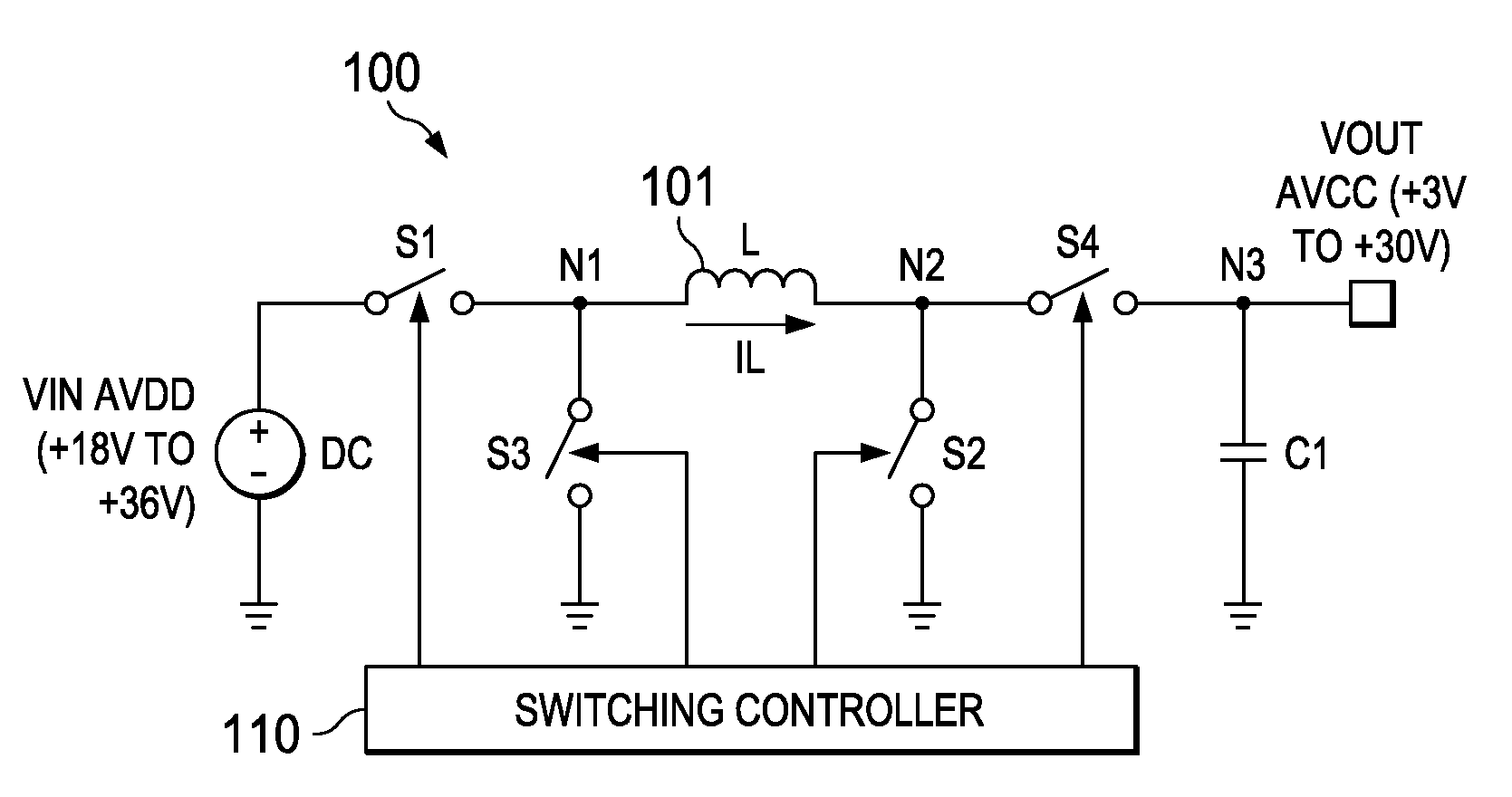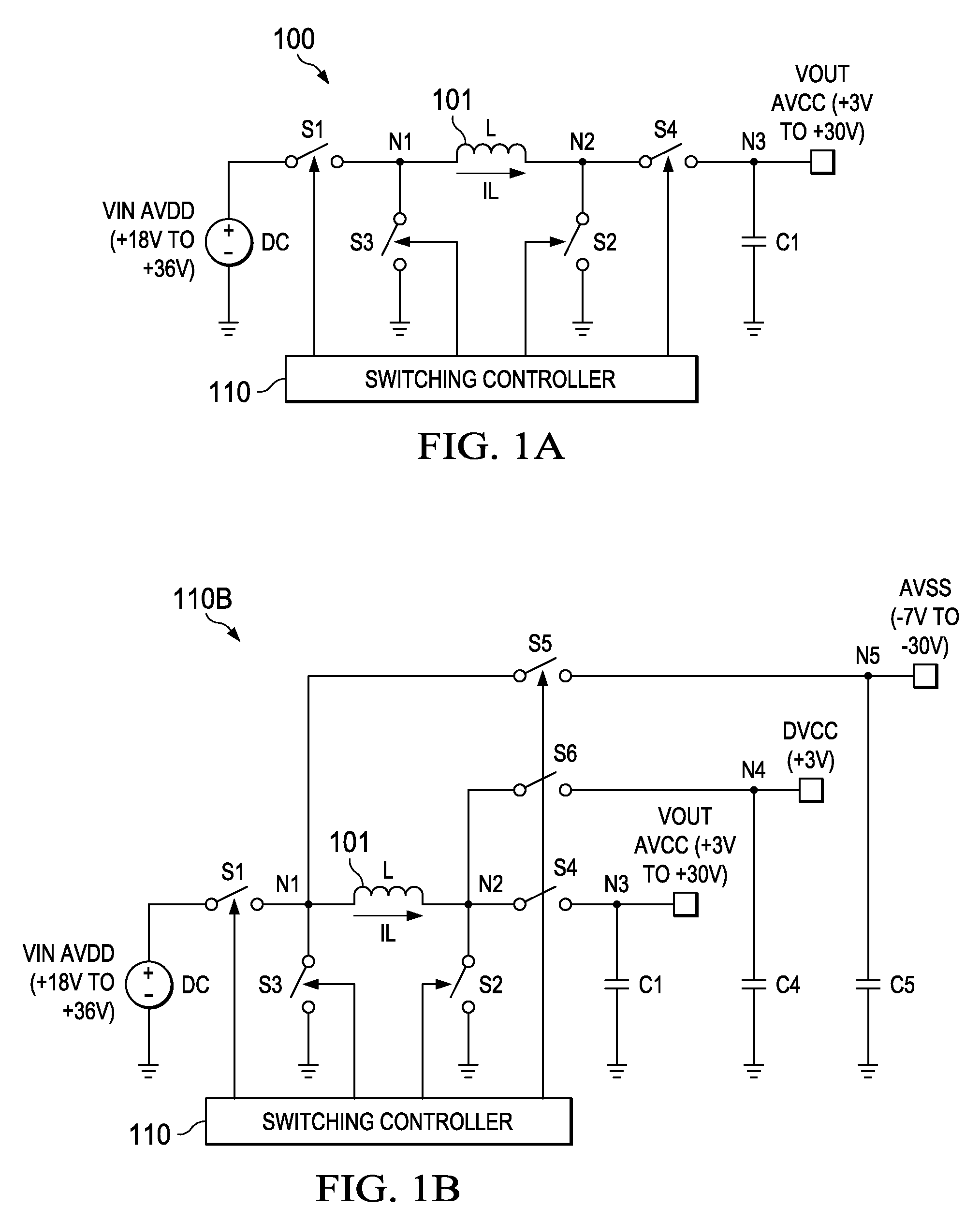Buck-boost converter with buck-boost transition switching control
a converter and control technology, applied in the direction of dc-dc conversion, power conversion systems, instruments, etc., can solve the problems of slow response, large lq (quiescent or ground current), and lower efficiency at the transition region
- Summary
- Abstract
- Description
- Claims
- Application Information
AI Technical Summary
Benefits of technology
Problems solved by technology
Method used
Image
Examples
Embodiment Construction
[0027]This Description and the Figures disclose example embodiments and applications that illustrate various features and advantages of the invention, aspects of which are defined by the Claims. Known circuits, functions and operations are not described in detail to avoid unnecessarily obscuring the principles and features of the invention.
[0028]The buck-boost regulation (switching control) methodology, including buck-boost transition switching control, according to the invention, can be adapted for single inductor buck-boost switching converter / regulator architectures operating in DCM (discontinuous conduction mode). Converter and regulator can be used interchangeably, although, in general, a regulator includes converter circuitry together with an appropriate inductor and output capacitor (i.e., for typical applications, the inductor and output capacitor will not be integrated with the converter circuitry). The converter circuitry includes a switching network coupled to the inducto...
PUM
 Login to View More
Login to View More Abstract
Description
Claims
Application Information
 Login to View More
Login to View More - R&D
- Intellectual Property
- Life Sciences
- Materials
- Tech Scout
- Unparalleled Data Quality
- Higher Quality Content
- 60% Fewer Hallucinations
Browse by: Latest US Patents, China's latest patents, Technical Efficacy Thesaurus, Application Domain, Technology Topic, Popular Technical Reports.
© 2025 PatSnap. All rights reserved.Legal|Privacy policy|Modern Slavery Act Transparency Statement|Sitemap|About US| Contact US: help@patsnap.com



